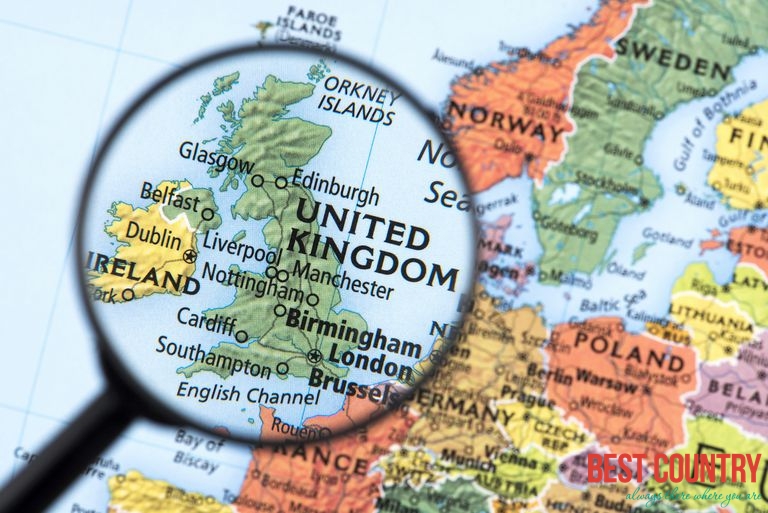Geography of Great Britain

The island of Great Britain is known for the global city of London, England as well as smaller cities like Edinburgh, Scotland. In addition, Great Britain is known for its history, historic architecture and natural environment.
The following is a list of ten geographic facts to know about Great Britain:
1) The island of Great Britain has been inhabited by early humans for at least 500,000 years. It is believed that these humans crossed a land bridge from continental Europe at that time.
Modern humans have been on Great Britain for about 30,000 years and until the about 12,000 years ago archeological evidence shows that they moved back and forth between the island and continental Europe via a land bridge. This land bridge closed and Great Britain became an island at the end of the last glaciation.
2) Throughout its modern human history, Great Britain was invaded several times. For example in 55 B.C.E., the Romans invaded the region and it became a part of the Roman Empire. The island was also controlled by various tribes and was invaded several times.
In 1066 the island was a part of the Norman Conquest and this began the cultural and political development of the area. Throughout the decades following the Norman Conquest, Great Britain was ruled by several different kings and queens and it was also a part of several different treaties between the countries on the island.
3) The use of the name Britain dates back to the time of Aristotle, however the term Great Britain was not officially used until 1474 when a marriage proposal between Edward IV of England's daughter, Cecily, and James IV of Scotland was written.
Today the term is used to specifically refer to the largest island within the United Kingdom or to the unit of England, Scotland and Wales.
4) Today in terms of its politics the name Great Britain refers to England, Scotland and Wales because they are on the United Kingdom's largest island.
In addition, Great Britain also includes the outlying areas of Isle of Wight, Anglesey, the Isles of Scilly, the Hebrides and the remote island groups of Orkney and Shetland. These outlying areas are considered a part of Great Britain because they are parts of England, Scotland or Wales.
5) Great Britain is located to the northwest of continental Europe and east of Ireland. The North Sea and the English Channel separate it from Europe, however the Channel Tunnel, the longest undersea rail tunnel in the world, connects it with continental Europe.
The topography of Great Britain consists mainly of low gently rolling hills in the eastern and southern portions of the island and hills and low mountains in the western and northern regions.
6) The climate of Great Britain is temperate and it is moderated by the Gulf Stream. The region is known for being cool and cloudy during the winter and the western parts of the island are windy and rainy because they are more influenced by the ocean.
The eastern parts are drier and less windy. London, the largest city on the island, has an average January low temperature of 36˚F (2.4˚C) and a July average temperature of 73˚F (23˚C).
7) Despite its large size the island of Great Britain has a small amount of fauna. This is because it has been rapidly industrialized in recent decades and this has caused habitat destruction across the island.
As a result there are very few large mammal species in Great Britain and rodents like squirrels, mice and beaver make up 40% of the mammal species there. In terms of Great Britain's flora, there is a large variety of trees and 1,500 species of wildflower.
8) Great Britain has a population of about 60 million people (2009 estimate) and a population density of 717 persons per square mile (277 persons per square kilometer). The main ethnic group of Great Britain is British - particularly those who are Cornish, English, Scottish or Welsh.
9) There are several large cities on the island of Great Britain but the largest is London, the capital of England and the United Kingdom. Other large cities include Birmingham, Bristol, Glasgow, Edinburgh, Leeds, Liverpool and Manchester.
10) Great Britain's United Kingdom has the third largest economy in Europe.
The majority of the UK's and Great Britain's economy is within the service and industrial sectors but there is also small amount of agriculture.
The main industries are machine tools, electric power equipment, automation equipment, railroad equipment, shipbuilding, aircraft, motor vehicles, electronics and communications equipment, metals, chemicals, coal, petroleum, paper products, food processing, textiles and clothing. Agricultural products include are cereals, oilseed, potatoes, vegetables cattle, sheep, poultry and fish.